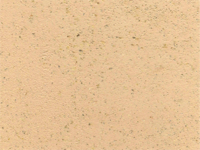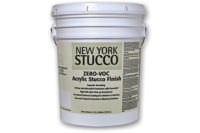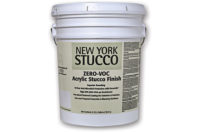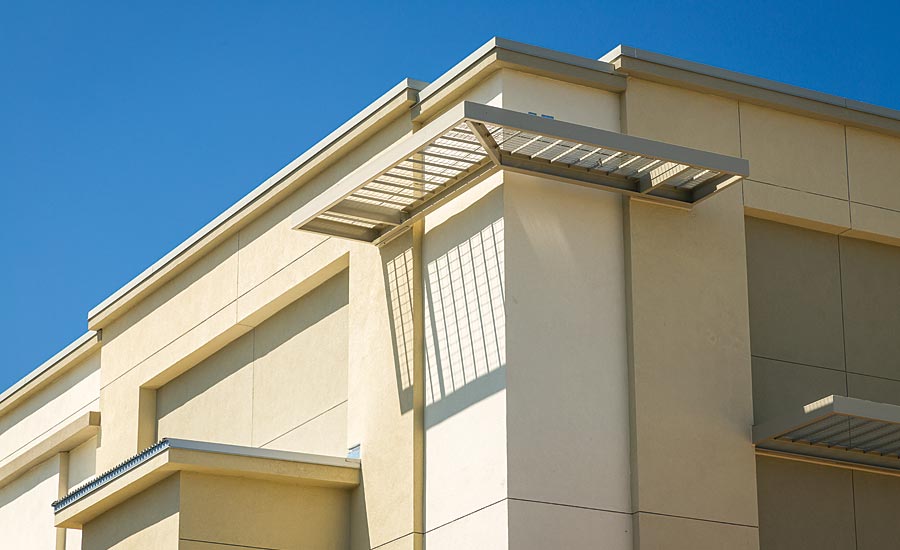Acrylic Finish Over Stucco

The evolution of using an acrylic finish system took some time but now it's here to stay.

The evolution of using an acrylic finish system took some time but now it's here to stay.

The evolution of using an acrylic finish system took some time but now it's here to stay.

The evolution of using an acrylic finish system took some time but now it's here to stay.




I don’t really know who was the first plasterer to actually do it. Plasterers, being the creative bunch they are, have probably been doing it since it became available in the U.S. back in the ’60s. Admittedly, I became heavily involved in it when they made it more elastic so it would perform better. Now, it is accepted as a common practice and performed everywhere. Yes, you are correct, I am talking about acrylic finish over stucco.
I suppose in those early years, there were some fresh thinkers. Those who saw the ease of applying an acrylic finish vs. a cement finish, who were willing to take that chance to try an acrylic finish over stucco. I suppose some traditionalists fought it because it took a specific system product and used it in an untraditional way.
In those early years, the acrylic finish applied to stucco was considered “out there and risky.” However, it looked nice, held a consistent color and was easy to apply. If there was a fault, it was that it tended to show the hairline cracks typically associated with stucco more so than the traditional stucco finishes. The big reason was that the acrylic finish was more brittle and a thinner thickness than a two-pass stucco finish, ergo more illustrative of the cracking. Here enters the elastomeric acrylic finishes.
Supercharging the Performance
My brothers and I really got a foothold on this market segment around 1991-92 in Albuquerque, N.M., when our friend Rob Knight came to us with a new stucco finish. It was called Powerlastic and he and his partner, Steve Harbin, had a material supply yard that was selling this product. It took the most common acrylic finish types: rilled, smooth, heavy and light sand. With the addition of an elastomer, which supercharged their performance to withstand the cracking associated with stucco. It spread as well as a common acrylic finish but was a bit more challenging to float because it tended to skin over a bit quicker. We figured out that the stucco basecoat, being a “thirsty” basecoat, was quickly absorbing the moisture in the finish, thus making it take up quickly. The solution was to use a primer.
Back then, the EIFS industry manufacturers produced a primer product for certain acrylic finish applications. It was a high build, paint-like product that could be tinted the same color tones as the finish and served to equalize the suction of the basecoat and provide a colored sub-surface.
In EIFS applications, when the finer sand finishes and some of the heavily rilled finishes were applied, there were always some slight voids where the basecoat would show through and in the lighter color tones, had a darkening effect, thus the need for a tinted primer. Also, in the spray applications, it was recommended to use a colored primer.
What we learned by using a primer over the stucco basecoat was that it allowed more open time for the elastomeric finishes but because it was an actual coating material, in some instances this caused the finish to slide around and leave some small voids. The primers were too good and virtually ceased all suction from the stucco basecoat. Our first remedy was to water down the primer, sometimes quite a bit. Of course, this was verboten by the manufacturer and was cause for any warranty to be voided. Consequently, on applications we started to use a clear emulsion that was sold by the EIFS manufacturers as a sub-base stabilizer. An acrylic primer was also used to solidify a compromised CMU façade, where an EIF system was to be adhered.
Good like Goldilocks
These clear emulsions were of the viscosity to allow good penetration into an open or chalky cement surface. They were also used as an adhesive enhancer for an application of an adhesively applied EIF system over an old worn out painted surface. Again, the viscosity allowed for good penetration into the sub-surface to bind all of the loose pieces together and provide for a good adhesive surface. We figured out that these clear products would soak into the stucco surface readily and would still allow for a good initial suction of the finished product. It was Goldilocks good—not too much, not too little, just right, and because it was clear, it didn’t stain the surrounding surfaces. We used to apply our primers through a Graco spray rig and because of the colored primers we had to mask everything. These clear primers allowed for spraying without extensive masking. In the New Mexico market, there were many exposed wood features such as beams, roof drains, window surrounds and exterior porch ceilings that always seemed to get a little bit of overspray on them.
Therefore, we always primed the stucco before applying any elastomeric or conventional acrylic finish. Today in New Mexico, that is the finish of choice for all stucco (and re-stucco) projects and has gained popularity in most other stucco cladding states. As with any established application processes, the acrylic finish over stucco has gone through its own changes, partially through value engineering, and partially through learned behavior. Our natural tendency as contractors is to get all of the work done and sometimes omitting a step or product to compete with the ridiculously low bid of the competitor is required. This has been evidenced in the acrylic finish over stucco market where the primers have been eliminated. Furthermore, since the manufacturers are also faced with the downward price pressure, they are also finding new formulations for said price requests.
There are price-point acrylic finishes for application-over-stucco-only products available for the ever-growing large finish over stucco market.
Efficiency in Efflorescence
It has been my experience that the omission of primers allows for the potential of efflorescence to be increased. Let’s explore this: we are going to make some assumptions to compare from an equal starting point. The stucco mix has been done properly, the products were floated and wet cured properly and the period between applications was strictly adhered.
Conventional cement stucco finishes allow surface water to soak partially into the stucco, to varying degrees and at minimal depths, and then back out via evaporation. This happens readily and stucco performs and lasts for years under these conditions. It is only after extended years of weathering that a cement finish may need to be spruced up with a fogging process or a re-scrub.
When an acrylic finish is applied, the vapor permeability is lower compared to conventional stucco. Under certain conditions where the surface is exposed to a lot of water and no primers were applied, the moisture evaporation rate can slow down enough to allow the moisture to absorb the minerals in the stucco. During evaporation, the minerals are carried to the surface for their blooming debut. I have seen severe cases where the efflorescence was enough to blast the finish off “of” the surface. A primed stucco surface does not allow moisture to soak into the stucco surface in the first place and it allows vapor permeability so efflorescence is mitigated.
It’s Prime to use Primer
It is my personal opinion that an acrylic or elastomeric finish is a very appealing and performance enhancing addition over a primed stucco surface. It is much easier to maintain color consistency without the need for a paint coating. All of the conventional textures can be done and your workforce will love the ease of application. With all of the new finish options that are available from the EIFs manufacturers, the conventional stucco cladding can be dressed to the nines and remain a thing of beauty for years to come. Take it from me, no matter which acrylic finish products you choose, always use a primer first.
Looking for a reprint of this article?
From high-res PDFs to custom plaques, order your copy today!











